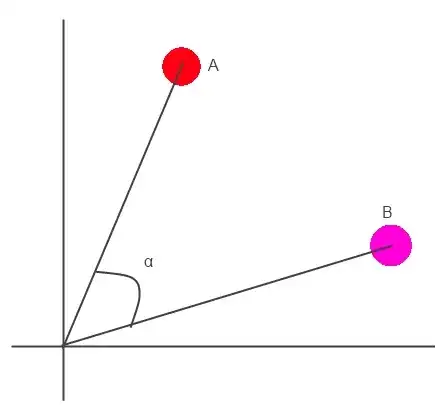Given the following image:
$\hskip{1.5 in}$ 
Supposing $A(100, 300)$ and $B(300, 100)$, how can I find the angle $\alpha$ between A and B?
On a side note, what's the main difference between a point and a vector? translating a point to a vector is as simple as Point = Vector? Sometimes I find articles where the terms are interchangable